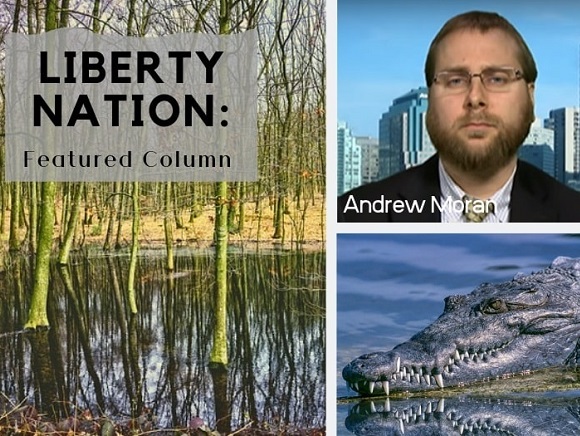War and Steel
U.S. Steel announced that its fourth-quarter financial performance will be much worse than previously expected. The company, which has received protections from the federal government, said that it will lay off workers, suspend some operations, slash its dividend, and temporarily halt stock buybacks. In the October-December period, U.S. Steel thinks it will report an adjusted loss of $1.15 per share and will reduce capital spending by $75 million to $875 million.
The company’s stock has been battered and beaten this year, cratering nearly 35% to under $12 a share. Since Washington initiated a trade war with China, shares have crashed close to 60%, despite a brief spike after President Donald Trump confirmed his protectionist tariffs.
It has been an interesting 18-month timeline for the steel industry that will inevitably be added to economics textbooks everywhere. When the Trump tariffs were first announced, steel prices soared as American businesses would enjoy a temporary advantage over foreign rivals. In fact, profit levels were at multi-year highs, and everybody was dancing. Because prices were too high, domestic demand eventually dwindled. While output has recovered from 2009 lows amid automation and other advanced technologies, overall production plunged in 2019.
 You cannot say that you were not warned. Not only did free-market acolytes sound the alarm about this inevitability, but it has also happened before, whether it was in the 1930s or in 2002. Yet, for whatever reason, we never learn our lessons on the danger of tariffs and the failure of protectionism.
You cannot say that you were not warned. Not only did free-market acolytes sound the alarm about this inevitability, but it has also happened before, whether it was in the 1930s or in 2002. Yet, for whatever reason, we never learn our lessons on the danger of tariffs and the failure of protectionism.
Commerce Secretary Wilbur Ross is still clutching to the idea that tariffs work, telling Bloomberg: “There has been much more capital invested in the steel and aluminum industries. On balance, they have both added jobs.”
In this regard, Ross is correct. According to the Bureau of Labor Statistics (BLS), employment in the iron and steel industry increased from 80,348 to 86,593 between January 2017 and June 2019. However, this can be explained by the tariff and protectionist euphoria. Plus, you could potentially see some easing when the BLS numbers reflect the recent layoffs in key steel markets, including Pennsylvania and Michigan.
S&P 500’s Amazing Adventures
The House of Representatives has voted to impeach President Donald Trump. You would not have realized it if you were paying all your attention to the stock market, especially the S&P 500.
The index, which measures 500 large companies listed on stock exchanges in the U.S., topped 3,200 for the first time this week as investors seemingly ignored the political theater being performed in Washington. The benchmark index finished the week at 3,221.21, recording its tenth winning week in the last 11. And the smart money is on this bull run expanding; Short positions as a percentage of shares outstanding on the SPDR S&P 500 ETF Trust have essentially vanished.
 Since House Speaker Nancy Pelosi (D-CA) launched her formal impeachment inquiry in September, the S&P 500 has risen about 7% – the Dow Jones Industrial Average has edged up 6% and the Nasdaq has jumped 10%. During former President Bill Clinton’s impeachment circus, the index advanced roughly 26%.
Since House Speaker Nancy Pelosi (D-CA) launched her formal impeachment inquiry in September, the S&P 500 has risen about 7% – the Dow Jones Industrial Average has edged up 6% and the Nasdaq has jumped 10%. During former President Bill Clinton’s impeachment circus, the index advanced roughly 26%.
Overall, the S&P is poised for its best annual performance since 2013.
The S&P 500 has been on a tear for the last decade, skyrocketing from around 1,200. With easy money flooding Wall Street again, greater trade certainty for global financial markets, and a Federal Reserve ready to engage should it locate hiccups in the U.S. economy, it is possible that the S&P 500 hits 3,500 within the next 18 months. Is this sustainable? Considering the returns investors have gotten this year and could potentially receive over the next 12 months, the real question many traders may ask is: Who cares?
Will Libra Lineup in Spontaneous Order?
The federal government and the Federal Reserve are terrified of Facebook CEO Mark Zuckerberg’s proposed digital currency, Libra. The currency and a platform have yet to exist – a timeframe is slated for some time in 2020 – but officials are doing what they can to either discourage Zuckerberg from unleashing Libra or prevent him from doing so.
Fed Governor Lael Brainard is the latest individual to issue a warning for Libra, positing that the currency faces a “core set of legal and regulatory challenges.” One of these is the uncertainty over how the Libra will be tied to several of its underlying assets. She added that the primary fundamentals – a virtual currency linked to government-backed money and other sound assets to avoid extreme fluctuations common in the overall cryptocurrency market – is unproven.
Speaking at a conference in Frankfurt, Brainard said:
“What would set Facebook’s Libra apart, if it were to proceed, is the combination of an active-user network representing more than a third of the global population with the issuance of a private digital currency opaquely tied to a basket of sovereign currencies. Without requisite safeguards, stablecoin networks at global scale may put consumers at risk.”
Central banks are still having conversations about the advance of digital payment systems and the public ledger system they operate on, mainly because these institutions are expected to adopt a similar model in the coming years. It is true that this is dominating the opinion-side of the news coverage, but there is another issue at hand that should be discussed: Free-market currency.
Considered a libertarian fantasy by critics, the issue of money born in a free-market economy ignites much debate, disdain, and disapproval. Even among libertarian circles, there is a discussion about the efficacy of such money. But why wouldn’t free-market currency survive and thrive? It would be inevitable that money supported by gold or another tangible asset would be chosen by consumers. However, why couldn’t other players attempt to eat away at the yellow metal’s market share and allow the marketplace to decide what form of money businesses and customers want to use?
 For those concerned about confusion, there is an economic principle made famous by Friedrich Hayek: Spontaneous order. This is exactly as the term suggests: The spontaneous self-organization out of chaos when you leave everyone alone without government rules and regulations. You see this in our everyday lives and throughout history, from the ice rink to the personal computer revolution to even the New York Stock Exchange.
For those concerned about confusion, there is an economic principle made famous by Friedrich Hayek: Spontaneous order. This is exactly as the term suggests: The spontaneous self-organization out of chaos when you leave everyone alone without government rules and regulations. You see this in our everyday lives and throughout history, from the ice rink to the personal computer revolution to even the New York Stock Exchange.
Centrally Planning Bedlam
You have already personally witnessed the costly effects of tariffs on the public without much gain. Now, imagine if the government sauntered onto the floor of the New York Stock Exchange and attempted to direct traders on what to buy and sell. If you think madness ensues daily on the NYSE now, then you can only dream of how it would metastasize into bedlam. The virtual currency market has done pretty well in recent years, thanks to the prevalence and adoption of bitcoin. All over the world, vendors are accepting the peer-to-peer digital currency in addition to conventional forms of money. Would it be out of the realm of possibility if a convenience store or a car wash accepted tobacco-backed money or gold-supported currency? Only the market can decide, not some arbitrary force in Washington.
~
Read more from Andrew Moran.




